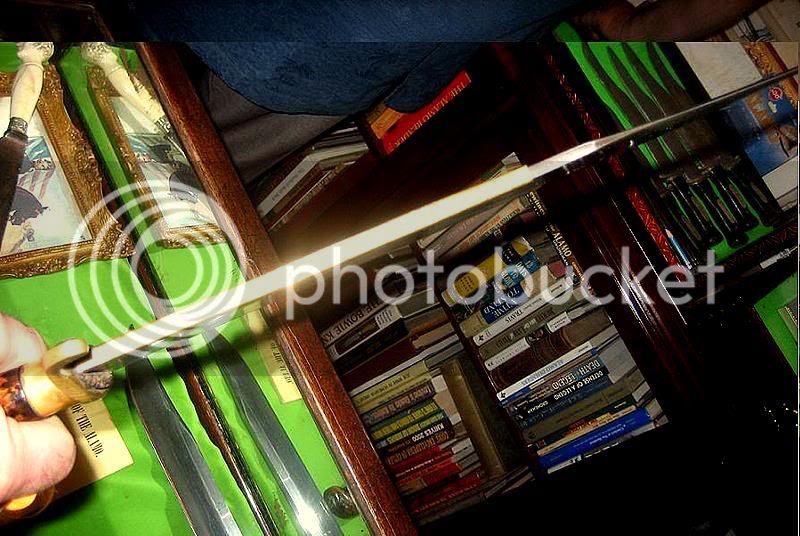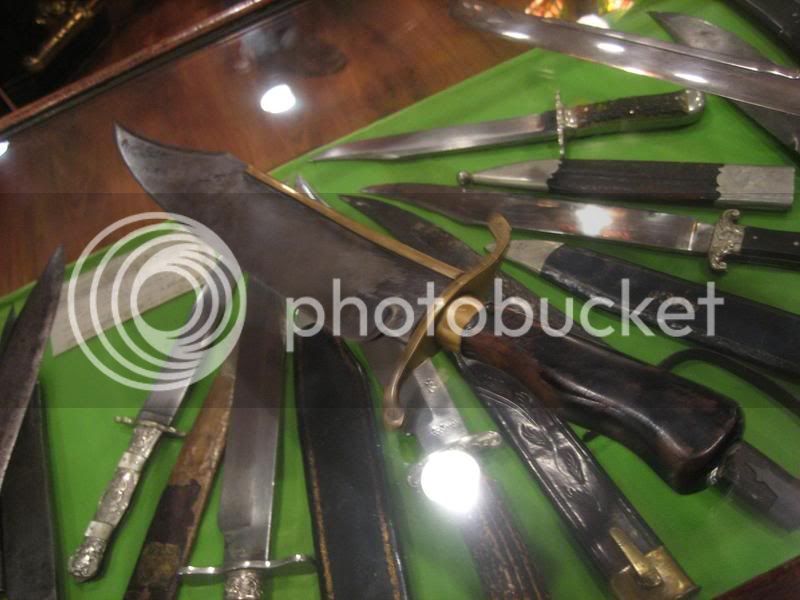I'm curious n figure some of ya knifesmiths may help me out here. I've seen some knives that have a brass channel along the back of the blade. Why is it there? seems to me the steel is plenty strong on its own. Is it just a decoration more or less or is there some sort of function to it. the thread on the Musso Bowie n pictures Davy put up brought it to mind. curious is all , thanks Birdman
You are using an out of date browser. It may not display this or other websites correctly.
You should upgrade or use an alternative browser.
You should upgrade or use an alternative browser.
brass backed knives?
- Thread starter Birdman
- Start date

Help Support Muzzleloading Forum:
This site may earn a commission from merchant affiliate
links, including eBay, Amazon, and others.
- Joined
- Aug 25, 2003
- Messages
- 6,561
- Reaction score
- 1,568
The idea of the brass back is to catch an opponents blade edge, and guide it away. A very controversial feature, historically, and in acual application. However, there are original Scottish blades of I believe, 17th, and 18th c. having this feature. As far as being found on early American knives, most historians say no.
Hey Mr.Wick or Davy, maybe you can tell me, was the brass back solid or was it like a channel that fit over the spine? I was going to make one once and I know it was only for aestetics(now), but, it seemed to me to capture an opponents blade that they would have had to have been solid. Inquiring minds need to know...Bud
- Joined
- Aug 25, 2003
- Messages
- 6,561
- Reaction score
- 1,568
You can go either way. You are not going to capture an opponents blade for very long, or very well. The best you could hope for would be a slightly controlled deflection, and much of that would depend on the sharpness of the blade you may try to deflect. More sharp, more bite, more control, but in reality, probably not enough to be of much worth. The Musso is a thin channel of about 1/32", soldered to the blade. The Scotch knives I saw photos of, were solid, inletted, and soldered in place, or possibly attached by mechanical means. The brass back, in my opinion, would be something seldom acually used, but would be there and ready, if ever an occasion arose. I believe if the brass back was really all that useful, you would see more of them in fighting knives, then, and now. They do make a Bowie look even more cool, and deadly though, don't they? :grin:

I am no knife expert, I leave that to the fine folks like Wick ... but from what I have seen, and mostly heard from those that should know agrees with exactly what Wick told us just now. You can see from this poor image that even the Musso blade brass back is added on top of the blade by some means. :hmm:
Davy
Randall used to do this on some of their bowies. If I understand correctly they would cut some type of channel down the back and then use a welding rod to lay a bead of brass down the channel that was then faired in. They only had one guy that could do it without screwing up the blade so when he retired they stopped offering the option.
My guess, which is totally based on nothing usefull, is that the concept may be a misunderstanding of the small silver plates Searles used to inlay in the back of his bowies (for engraving his name).
My guess, which is totally based on nothing usefull, is that the concept may be a misunderstanding of the small silver plates Searles used to inlay in the back of his bowies (for engraving his name).
- Joined
- Aug 25, 2003
- Messages
- 6,561
- Reaction score
- 1,568
No misunderstanding. This feature can be found on a few Scottish knives from the 17th, and 18th c. It may go back even earlier.
The so-called Spanish Notch goes back to the era of fighting with rapiers circa the 16-17th centuries. It is a "relic" carried over from the purpose built sword breaker left hand knives used in the Spanish school of fencing.Davy said:The same I guess could be said for the "Spanish notch" as well! :hmm:
Davy
In later knives it became a decorative motif that has no real function other than that - despite some of the "strange" functions attributed to it such as stripping sinew or hauling in fish.......
A Spanish notch is decorative cut/filework just forward of the guard along the blade edge - Google it for examples. Here's alink to one example - http://www.bobticeknives.com/7-4-05-paulchen.jpg
There are many variations on the theme...
Last edited by a moderator:
That's what I meant about the "strange functions" that crop up - the Spanish notch appears on knives 2-300 years before percussion caps were invented...........
While it may have been used for such things (I've used them as a bottle opener :grin: ) it was not designed for such.....
While it may have been used for such things (I've used them as a bottle opener :grin: ) it was not designed for such.....
- Joined
- Aug 25, 2003
- Messages
- 6,561
- Reaction score
- 1,568

Similar threads
- Replies
- 9
- Views
- 1K
- Replies
- 37
- Views
- 2K
- Replies
- 15
- Views
- 653




